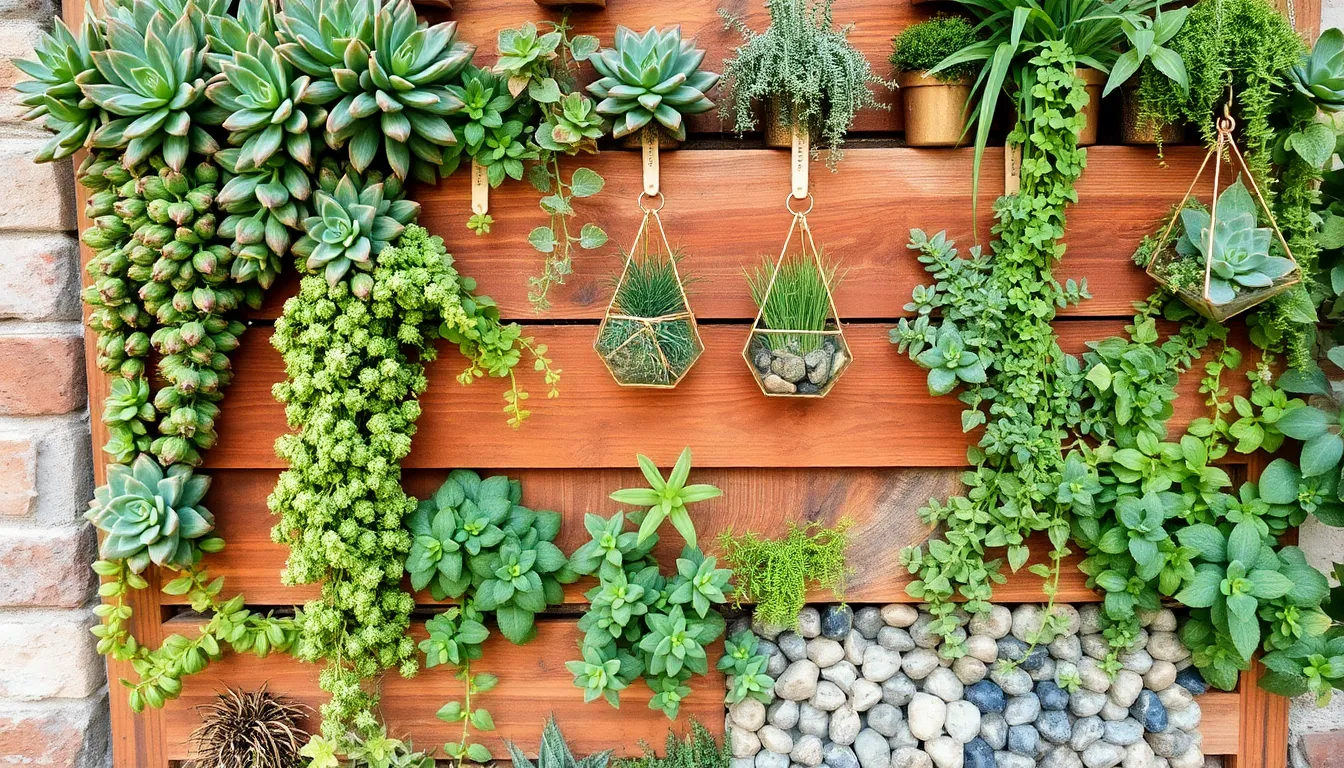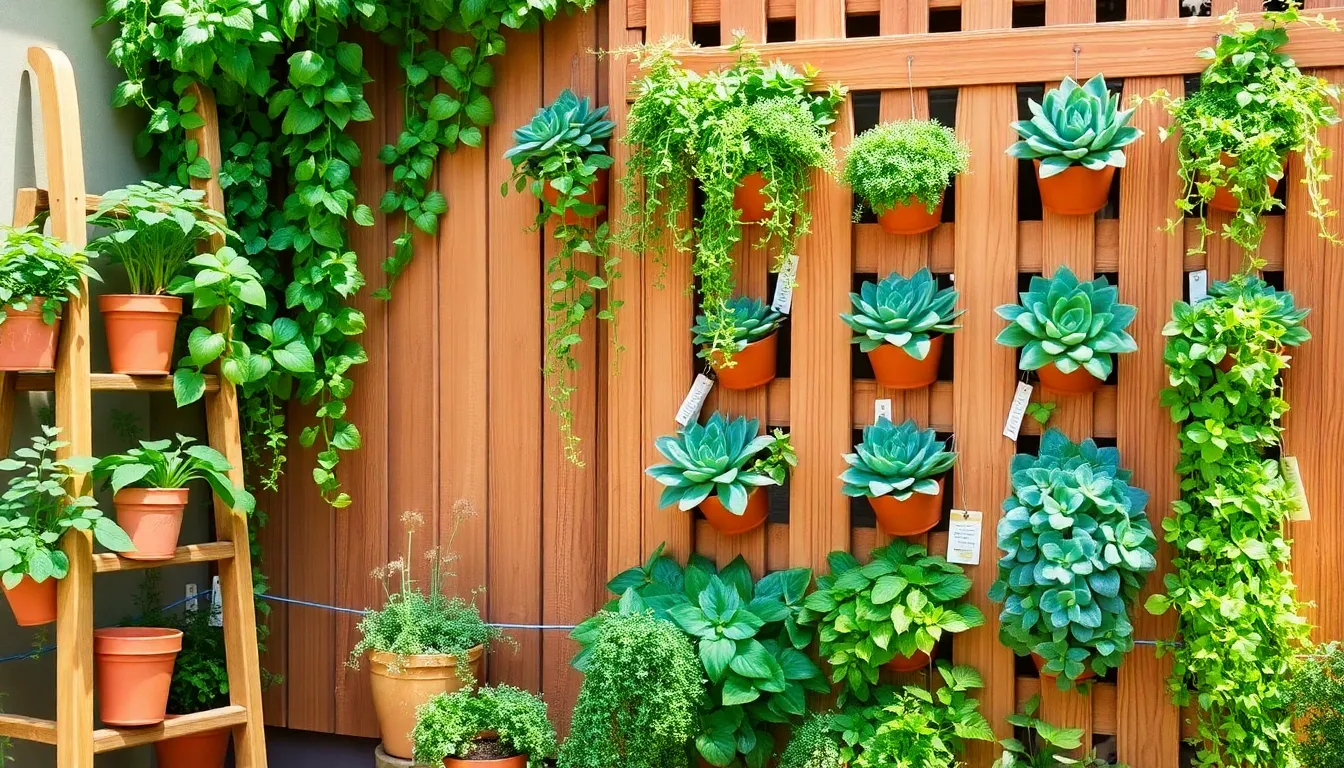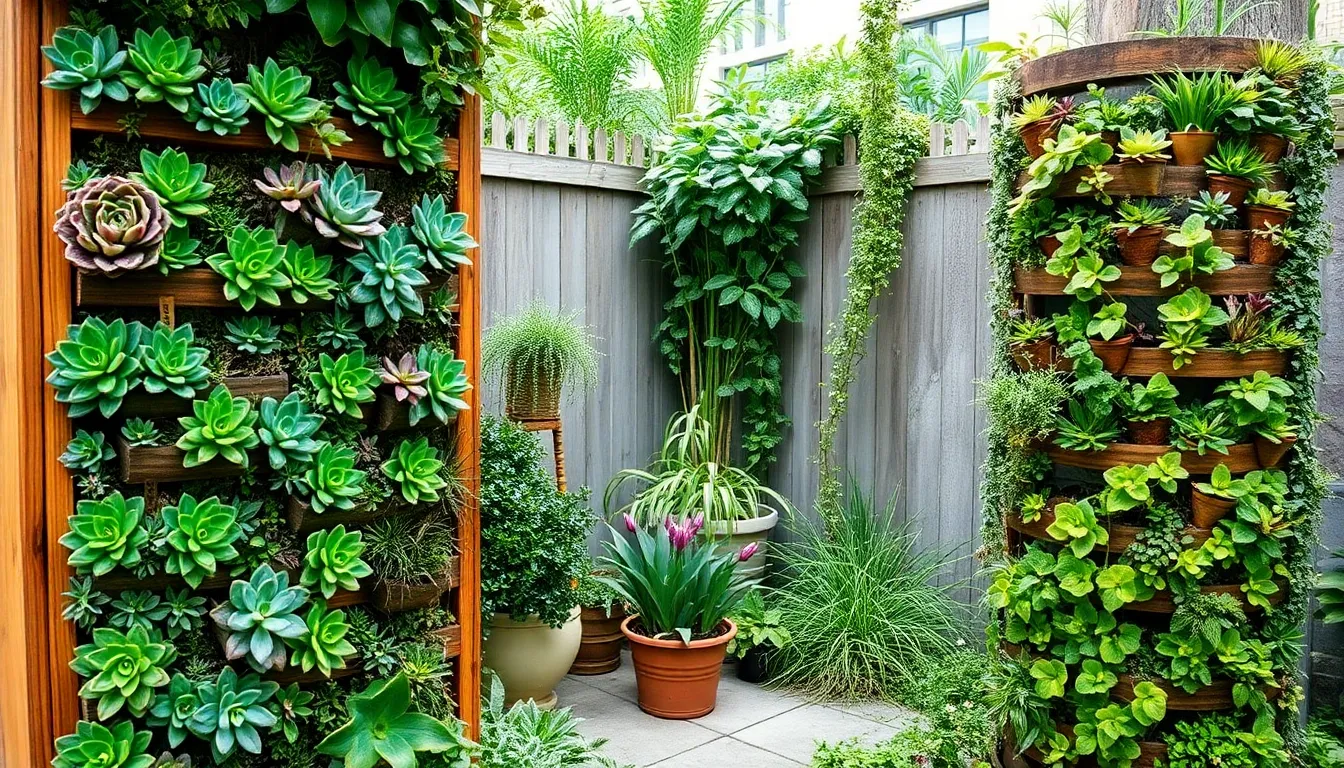There’s a unique kind of magic that happens when you transform your patio into a lush, living canvas, with plants climbing skyward in graceful harmony. Whether you’re just starting your gardening journey or you’ve already got dirt under your fingernails, “13 Vertical Patio Garden Ideas” is your gateway to creating vibrant, space-saving plant displays that elevate both your outdoor space and your spirit.
Imagine stepping onto your patio and being greeted by a wall of greenery that not only delights the senses but also maximizes every inch of available space. With this guide, you’ll discover innovative designs tailored for any level of expertise, offering practical solutions that boost your confidence and inspire your creativity.
Install Wall-Mounted Planters
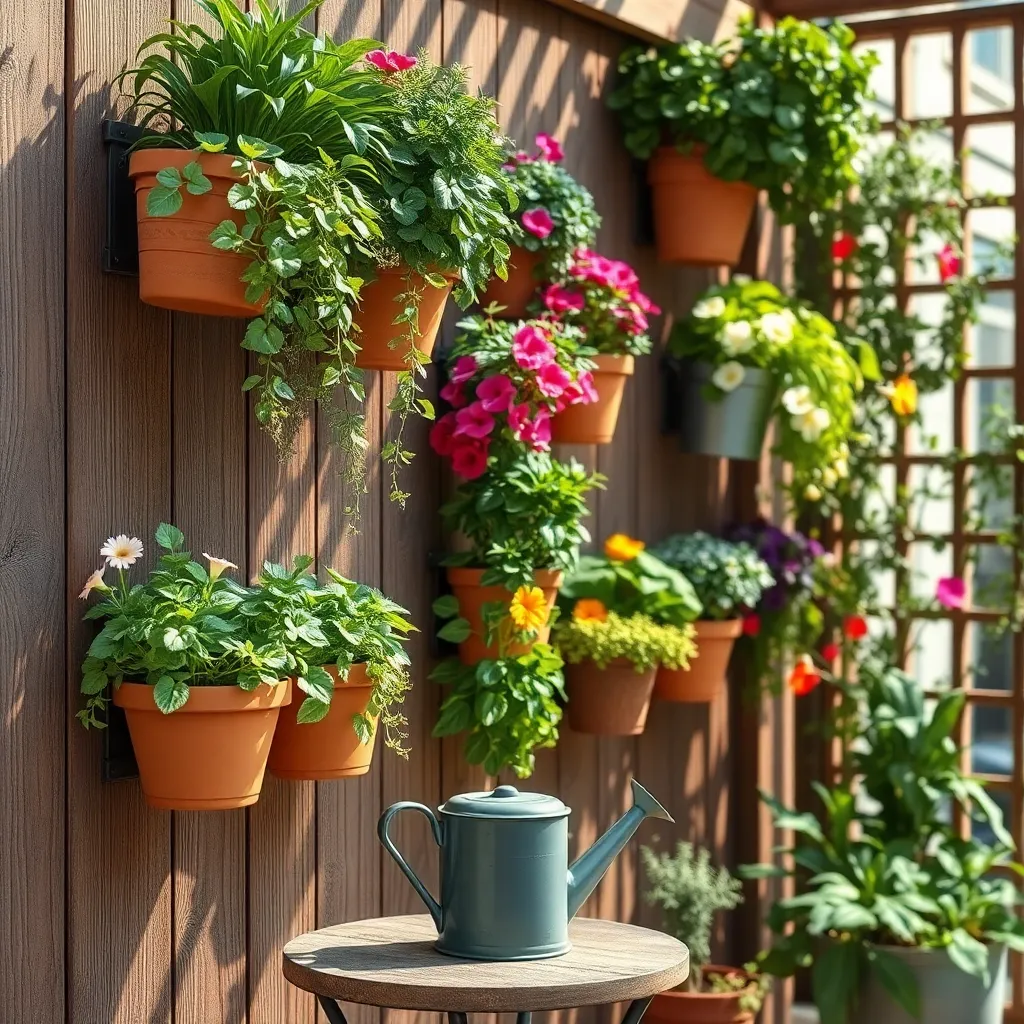
Wall-mounted planters are an excellent way to maximize space and add visual interest to your patio. Begin by choosing a sturdy wall that receives adequate sunlight, as this will be crucial for your plants’ health.
When selecting plants, consider varieties that thrive in the available light conditions, such as herbs or succulents for sunny walls. Herbs like basil, thyme, and oregano are perfect for this setup, as they not only look charming but are also handy for cooking.
Use a high-quality potting mix that retains moisture yet drains well to prevent root rot. Watering frequency will depend on the plant type and climate, but typically, these planters need watering every few days in warm weather.
For an advanced touch, install a simple drip irrigation system to ensure consistent moisture levels, especially during dry spells. Regularly check for pest infestations and trim back any dead foliage to keep plants healthy and vibrant.
Use Hanging Baskets Creatively
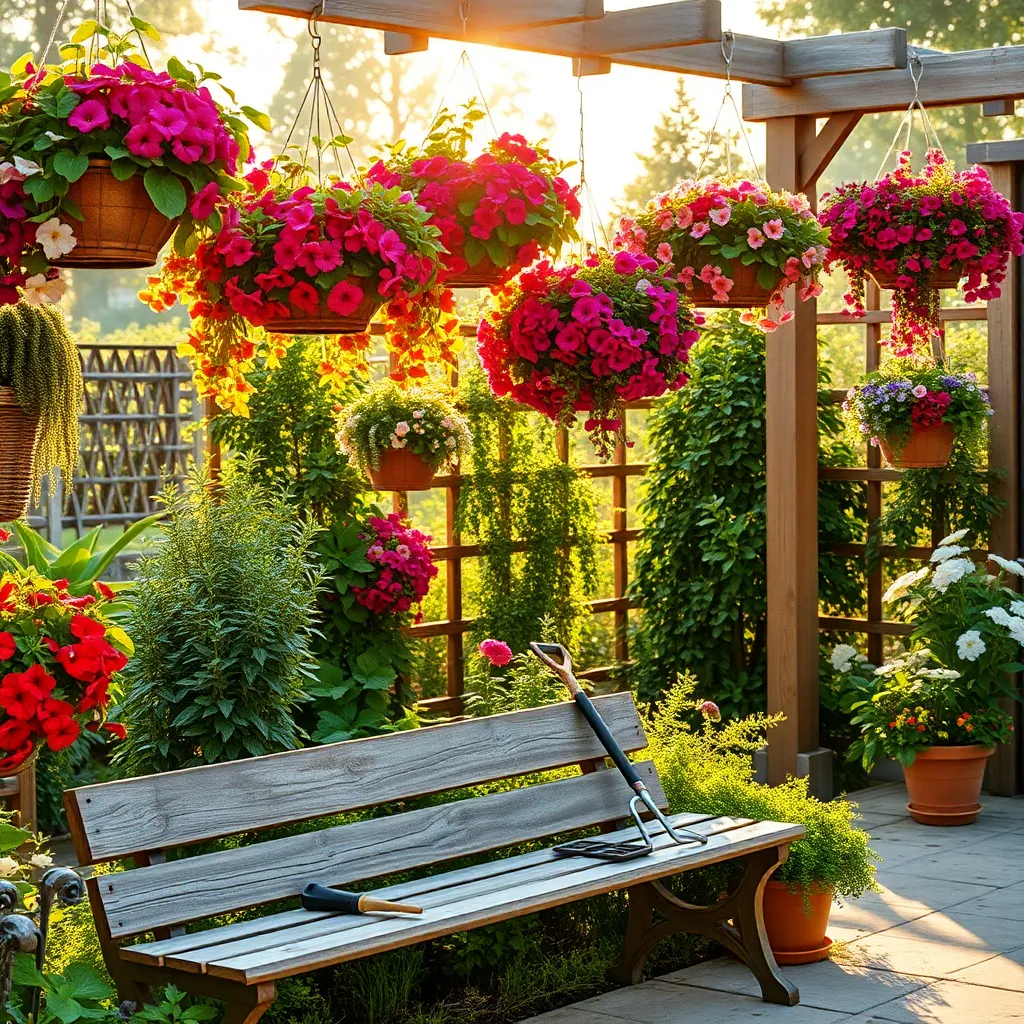
Hanging baskets offer a fantastic way to maximize vertical space on a patio, bringing greenery up to eye level. They can be filled with a variety of plants, from vibrant flowers to lush foliage, creating stunning displays that draw the eye upwards.
When choosing plants for your hanging baskets, consider those that thrive in your specific climate and light conditions. Petunias, fuchsias, and geraniums are great for sunny spots, while ferns and begonias prefer shaded areas.
To ensure your hanging baskets thrive, use a high-quality potting mix that retains moisture but drains well. Watering is crucial, especially in warmer months, so check the soil daily and water when the top inch feels dry.
For a touch of creativity, mix trailing plants like sweet potato vine or trailing lobelia with upright varieties to add depth and interest. Fertilize every two weeks with a balanced liquid fertilizer to promote healthy growth and abundant blooms.
Opt for Stackable Planter Systems
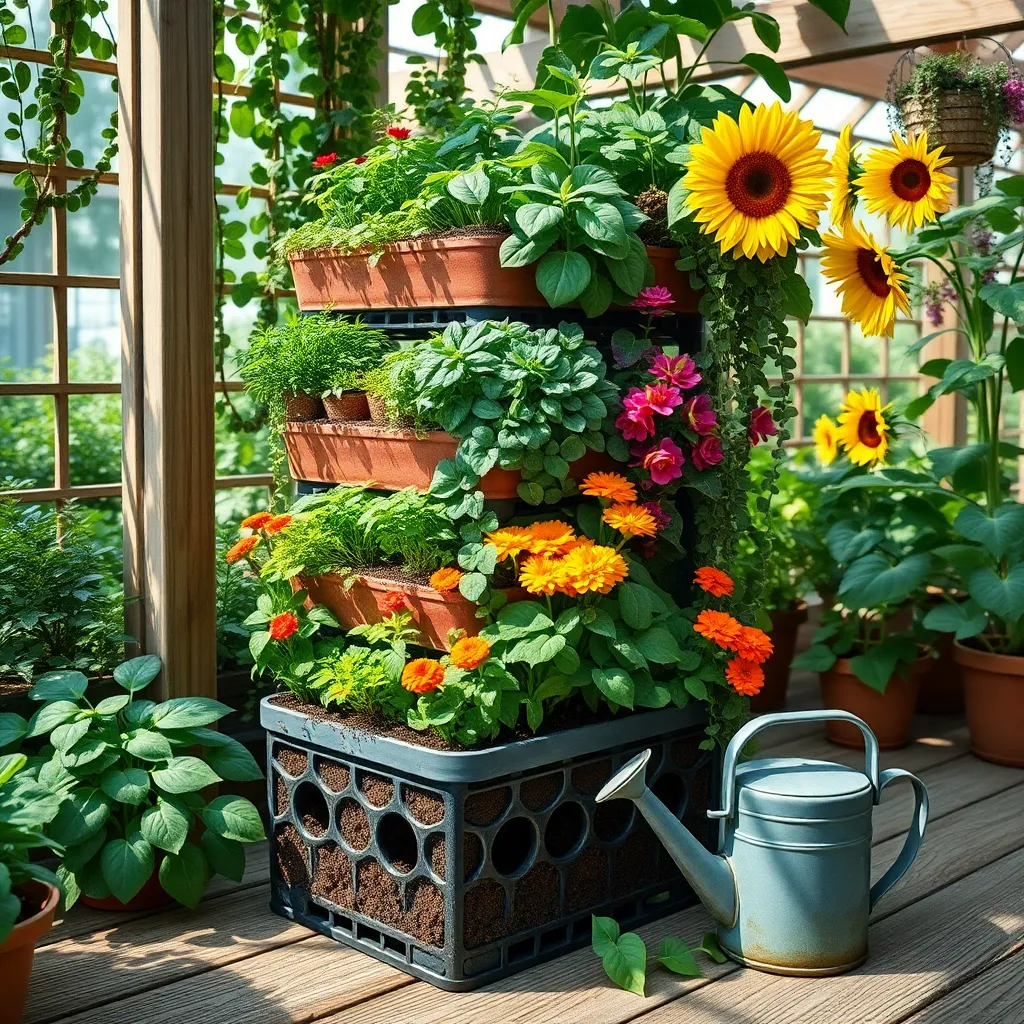
Stackable planter systems are an excellent choice for maximizing space on your patio. They allow you to grow a variety of plants in a minimal footprint, making them ideal for both small and large spaces.
To get started, choose a stackable planter system that suits your style and space. Make sure it has good drainage and is made of durable materials that can withstand weather changes.
When selecting plants, consider those with similar light and watering requirements to ensure they thrive together. Herbs like basil, parsley, and mint are great options, as they usually have similar needs and can be harvested regularly.
For best results, use a high-quality potting mix that retains moisture while providing excellent drainage. Water your stackable planters regularly, checking the top inch of soil to determine when they need a drink.
Advanced gardeners might want to experiment with stacking different types of vegetables. You can try growing leafy greens on the top tiers and root vegetables like radishes or carrots in the lower tiers to maximize your growing potential.
Incorporate Vertical Herb Towers
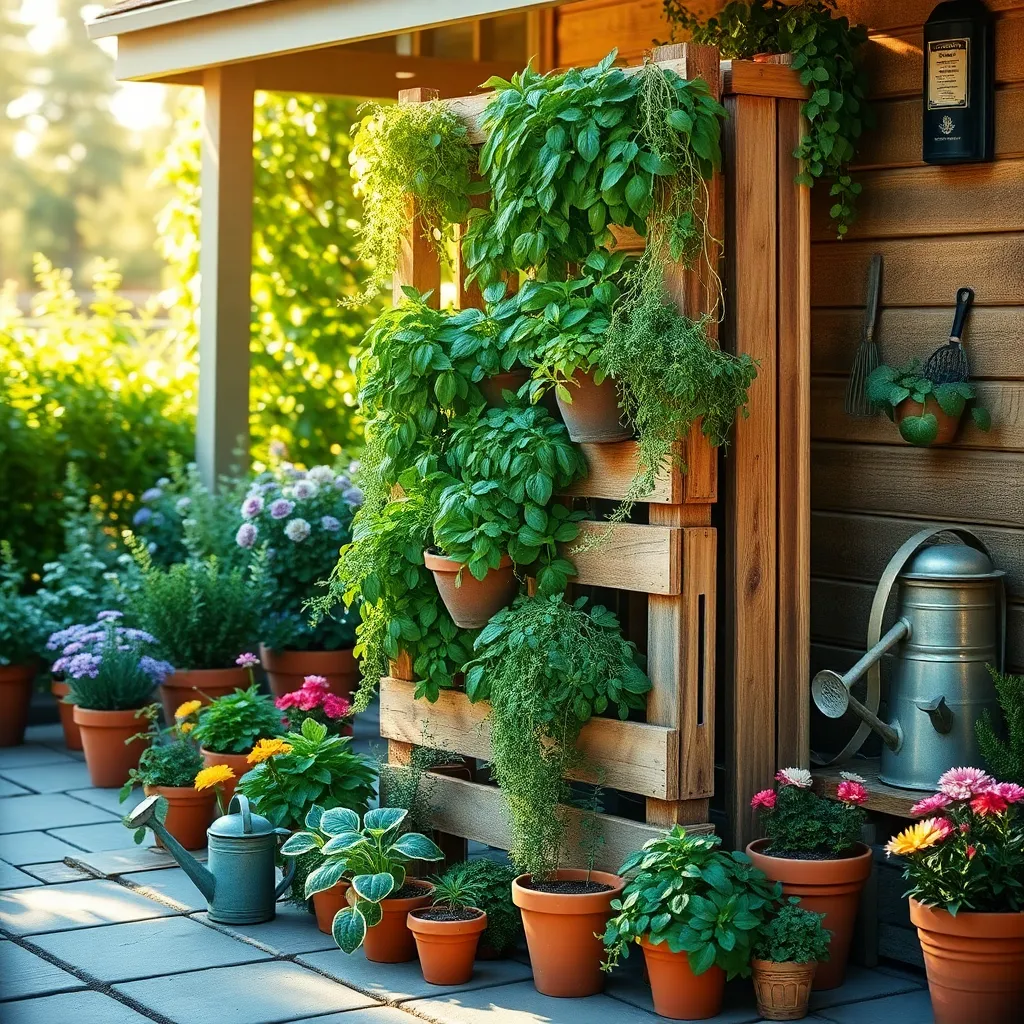
Vertical herb towers are an excellent way to maximize space and keep your favorite herbs within easy reach. These towers allow you to grow a variety of herbs in a compact area, making them perfect for patios and balconies.
Choose a sturdy structure that can support multiple levels, ensuring it has adequate drainage to prevent root rot. For beginners, herbs like basil, oregano, and parsley are easy to grow and do well in vertical setups.
It’s important to use a high-quality, well-draining potting mix to support healthy root systems. Water your herbs regularly, but allow the soil to dry out slightly between waterings to avoid overwatering.
Advanced gardeners can experiment with companion planting, such as pairing basil with tomatoes for mutual growth benefits. Consider rotating your herb selection seasonally to keep your tower productive throughout the year.
Create a Pallet Garden Wall
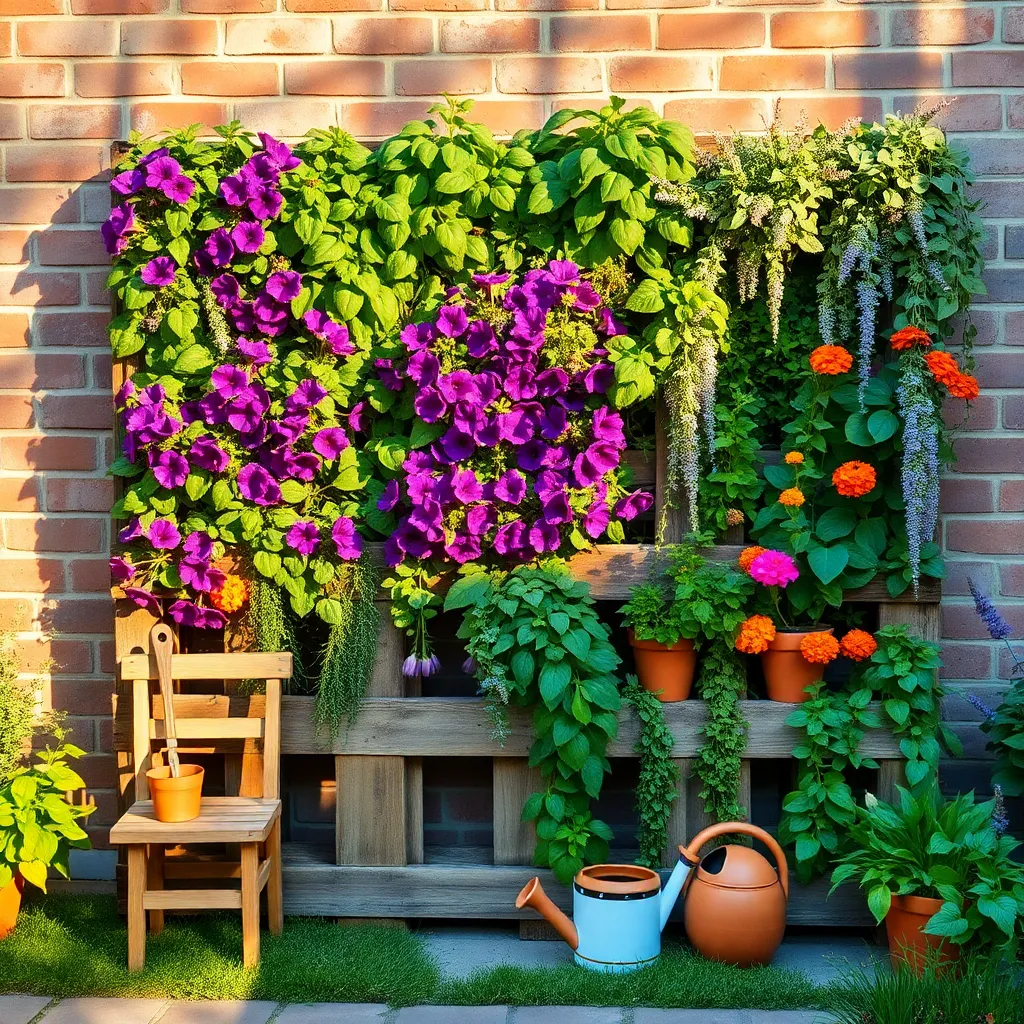
Transforming a simple pallet into a stunning garden wall is a practical way to maximize your patio space. To start, choose a sturdy wooden pallet and ensure it is free from chemicals by opting for those marked with “HT” for heat-treated.
Once you have your pallet, sand it down to remove any splinters and apply a weather-resistant sealant to prolong its life outdoors. You can then attach landscaping fabric to the back and bottom of the pallet to hold soil in place, creating a pocket for your plants.
When selecting plants, consider those that thrive in vertical gardens, such as herbs, succulents, or ferns. These plants are typically low-maintenance and adapt well to the confined spaces of a pallet garden.
For planting, fill each section with a high-quality potting mix, ensuring it is well-aerated and retains moisture. Watering frequency will depend on the plant varieties you’ve chosen, but generally, a pallet garden requires more frequent watering due to increased exposure to air and sunlight.
As your pallet garden matures, regularly check for signs of overgrowth or disease, trimming plants as needed to maintain a tidy appearance. Advanced gardeners might experiment with adding a drip irrigation system to make maintenance even easier and more efficient.
Implement Tiered Plant Shelves
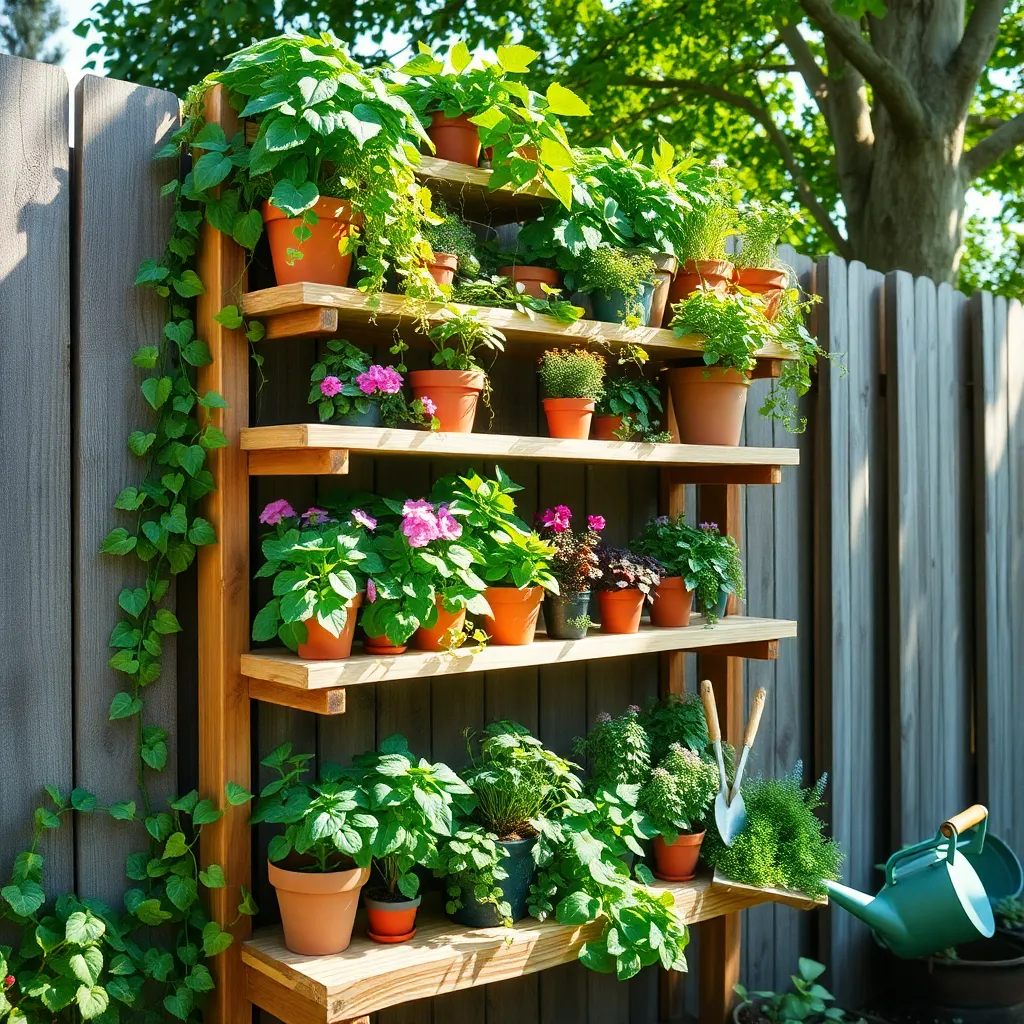
Implementing tiered plant shelves is an excellent way to maximize vertical space on your patio. These shelves allow you to cultivate a diverse range of plants, from herbs to flowering plants, in a compact area.
For beginners, it’s essential to choose sturdy shelves that can withstand both weight and weather conditions. Opt for shelves made of materials like treated wood or metal, which offer durability and can support a variety of plant sizes.
When setting up your shelves, pay attention to the sunlight requirements of each plant. Place sun-loving plants on the top tier where they can receive the most light, while shade-tolerant plants can thrive on lower levels.
Ensure proper drainage by using pots with holes and placing saucers beneath them to catch excess water. This will help prevent root rot and maintain the overall health of your plants, making your vertical garden both beautiful and functional.
Try Pocket Planters for Herbs
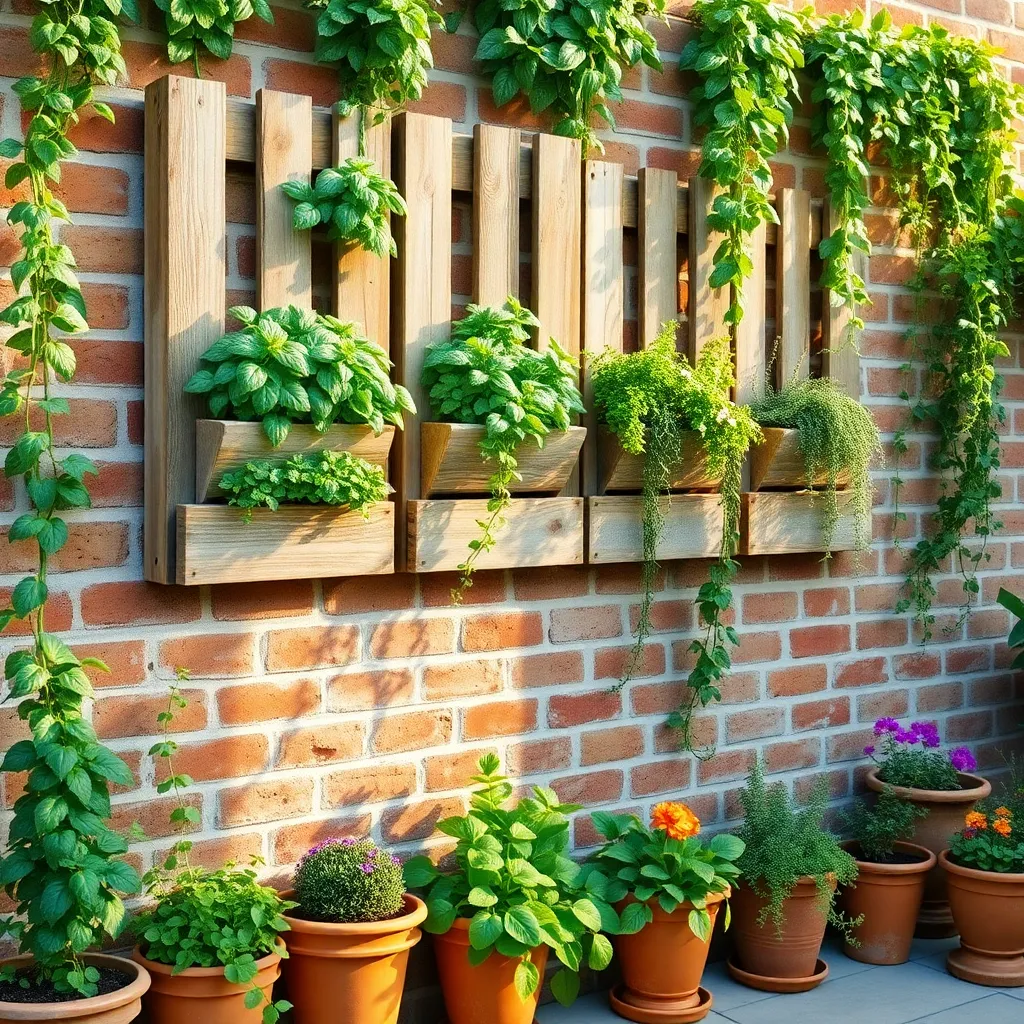
Pocket planters are an excellent solution for growing herbs in small spaces, especially on patios. These vertical planters maximize limited area by allowing you to stack multiple herb varieties, making the most of your available space.
Start by selecting a sunny spot on your patio, as most herbs thrive with at least six hours of sunlight daily. Choose herbs like basil, parsley, and thyme, which are well-suited for pocket planters and can provide a continuous harvest.
Use a high-quality potting mix that provides excellent drainage, as herbs do not like to sit in waterlogged soil. Adding a slow-release fertilizer can give your herbs a nutrient boost, ensuring they grow lush and flavorful.
Water your herbs consistently, allowing the top inch of soil to dry out between waterings to prevent root rot. For advanced gardeners, consider integrating a drip irrigation system to maintain an even moisture level, especially during hot summer months.
Use Trellises for Climbing Plants
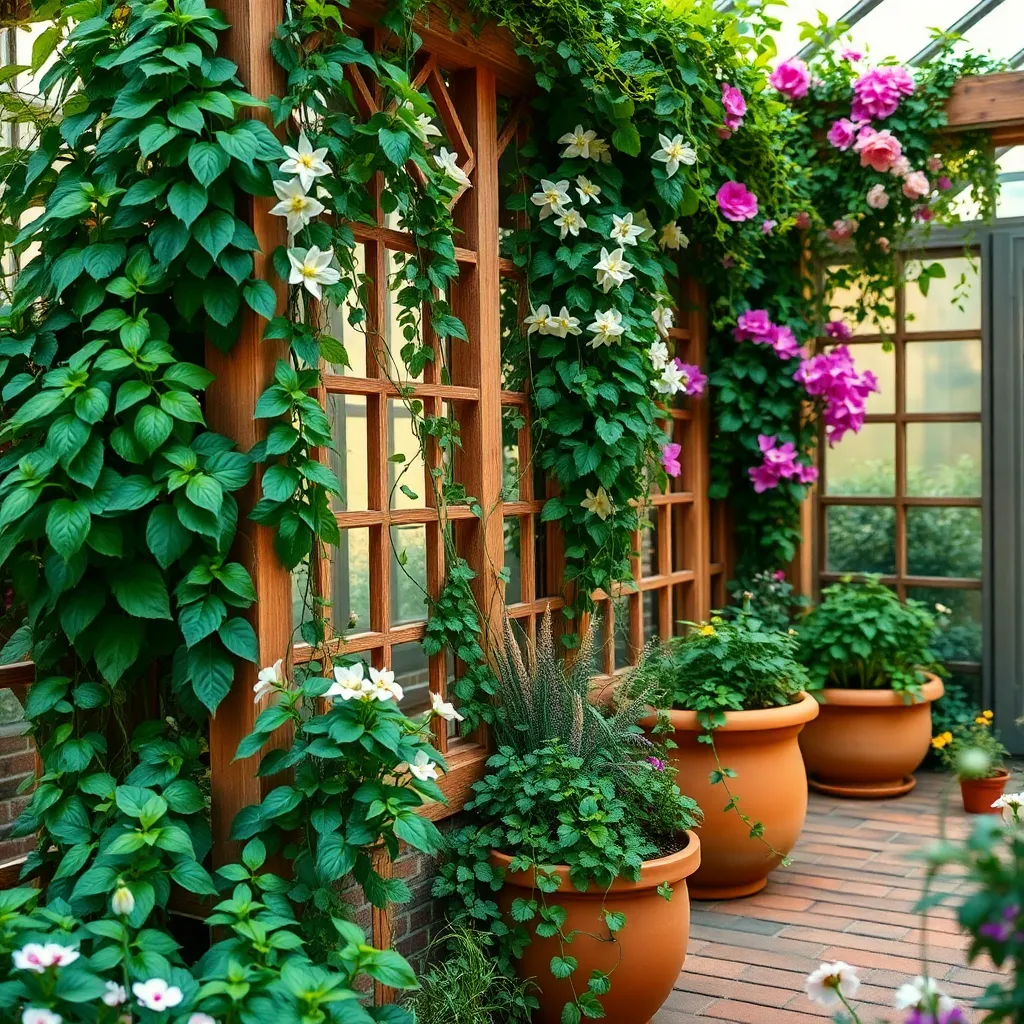
Incorporating trellises into your vertical patio garden is a fantastic way to maximize space and support climbing plants. These structures offer stability and direction for plants like peas, beans, and cucumbers, helping them grow upward rather than outward.
Choosing the right trellis depends on the plant’s size and growth habits. For lightweight climbers like sweet peas, a simple bamboo or wire trellis will suffice, while heavier plants such as cucumbers might require a sturdier, A-frame design.
Placement is crucial when setting up trellises for climbing plants. Ensure they’re positioned in areas with adequate sunlight to promote healthy growth, typically requiring at least six hours of direct sunlight per day for most climbing vegetables and flowers.
Watering climbing plants is particularly important as they grow vertically. A consistent watering schedule ensures that the roots remain moist but not waterlogged, with a preference for deep watering once or twice a week, depending on the climate and soil type.
Finally, consider plant care beyond just watering. Regularly check for pests and diseases, which can be more prevalent in dense vertical gardens, and use organic pest control methods to keep your plants healthy and thriving.
Build a Ladder Plant Stand
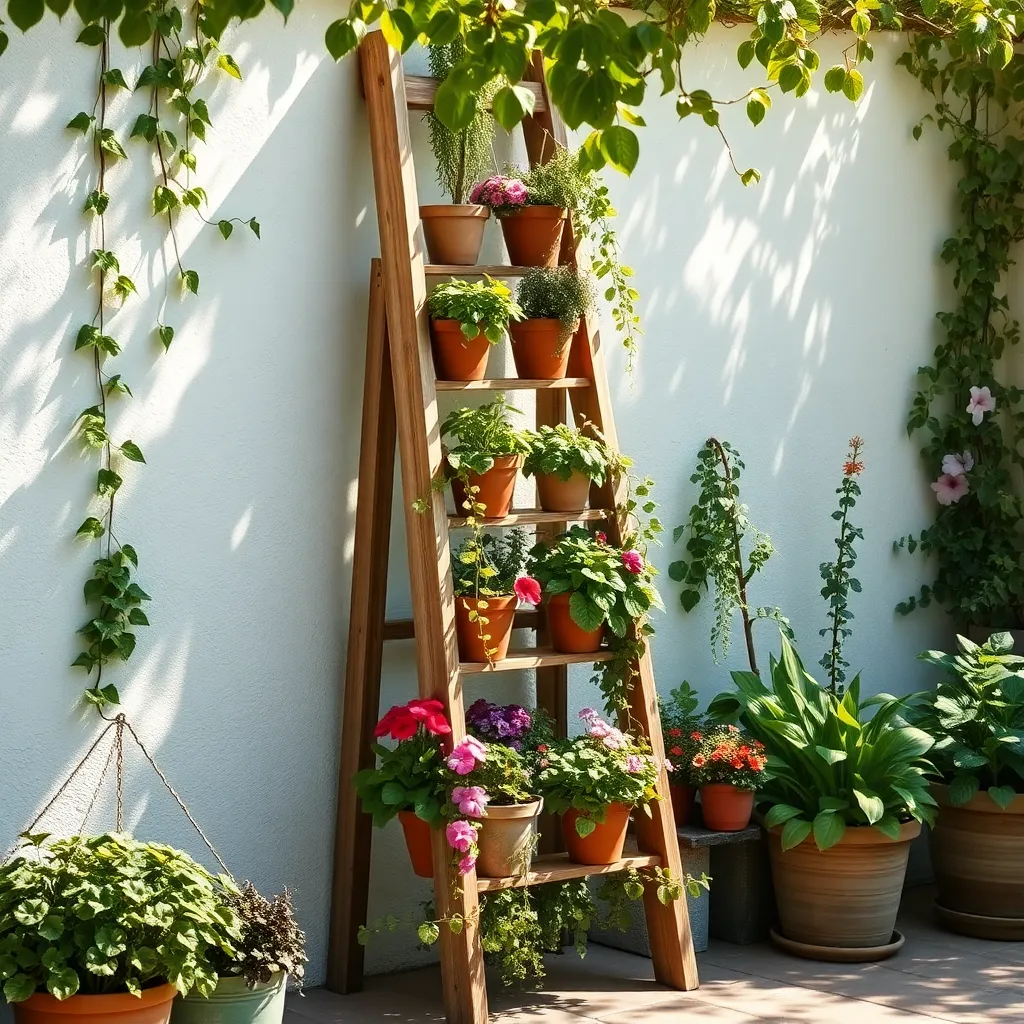
Transform your patio into a lush oasis by building a ladder plant stand. This vertical structure is perfect for maximizing space while displaying multiple plants in an aesthetically pleasing manner.
Start by selecting a sturdy wooden ladder or a metal one if you prefer a more modern look. Ensure it is stable and suitable for outdoor use, as it will need to withstand weather conditions.
Position the ladder against a wall or in a corner where it can receive adequate sunlight. Most plants thrive with at least six hours of sun each day, so choose a spot accordingly.
Arrange pots of varying sizes on each step, beginning with larger pots at the bottom and smaller ones at the top. This not only balances the visual weight but also allows each plant to receive sufficient light.
Use pots with drainage holes to prevent waterlogging, which is crucial for healthy plant roots. Consider adding saucers under each pot to catch excess water and protect the ladder from moisture damage.
Water the plants based on their specific needs, generally allowing the top inch of soil to dry out between waterings. For beginners, consider starting with hardy plants like succulents or herbs that require less frequent watering.
Advanced gardeners can experiment with a variety of plants, including trailing species like ivy or pothos, which can cascade beautifully down the sides of the ladder. This not only adds an element of movement to your display but also enhances the lush feel of your patio garden.
Choose Space-Saving Planter Frames
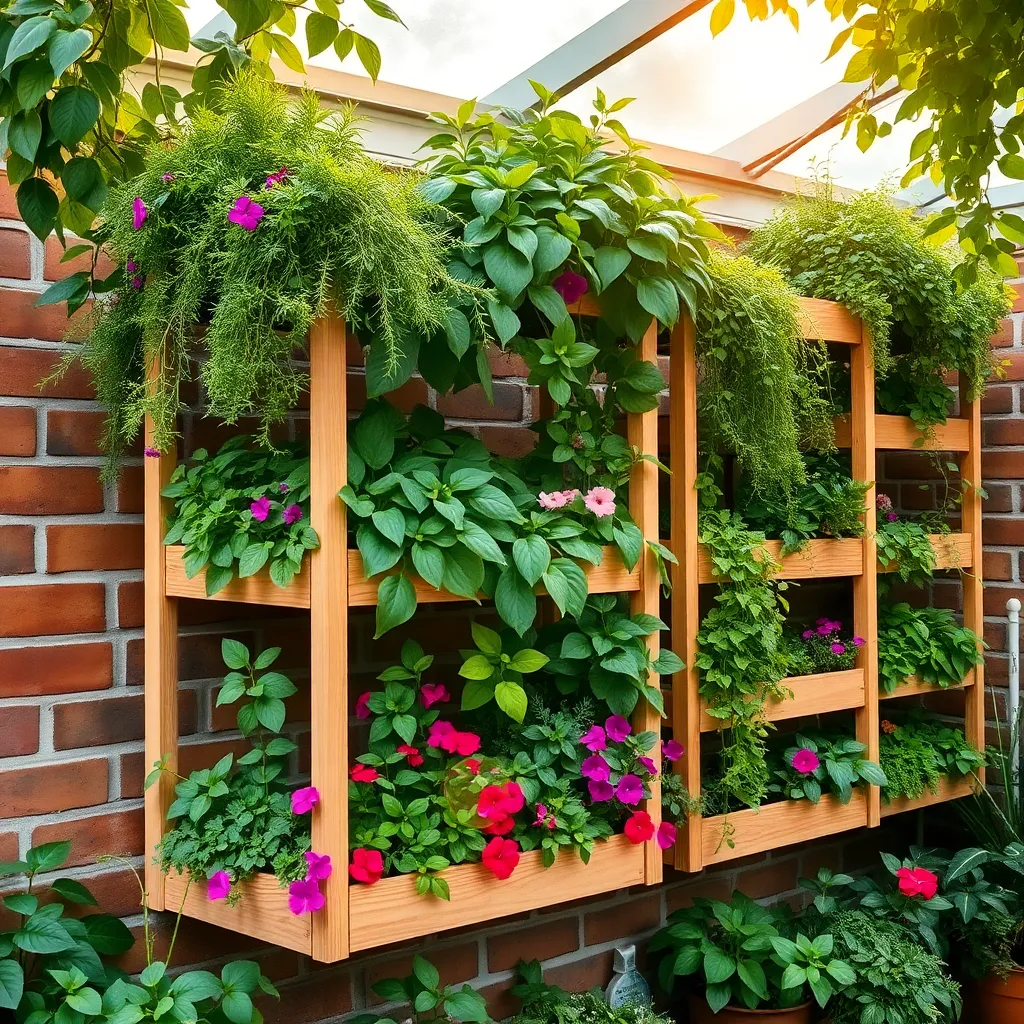
Space-saving planter frames are a fantastic solution for those with limited areas on their patio. These frames allow you to grow a variety of plants vertically, maximizing the available space while adding a lush, green aesthetic to your outdoor living area.
When selecting a planter frame, consider the types of plants you wish to grow. Choose frames with adjustable shelves or hooks to accommodate the varying heights and growth patterns of different plants, such as herbs, flowers, or small vegetables.
Opt for sturdy materials like metal or treated wood to ensure your planter frame withstands the elements. Keep in mind that the frame should have adequate drainage to prevent waterlogging, which can harm plant roots.
If you’re a beginner, start with easy-to-grow plants like basil or marigolds that thrive in vertical arrangements. For more experienced gardeners, try growing climbing vegetables like peas or cucumbers, which can benefit from the added support of a frame.
Regularly check the moisture levels in your planter frames, as vertical setups can dry out more quickly. Consider using a high-quality potting mix that retains moisture while providing good drainage to keep your plants healthy and vibrant.
Attach Planters to Railing
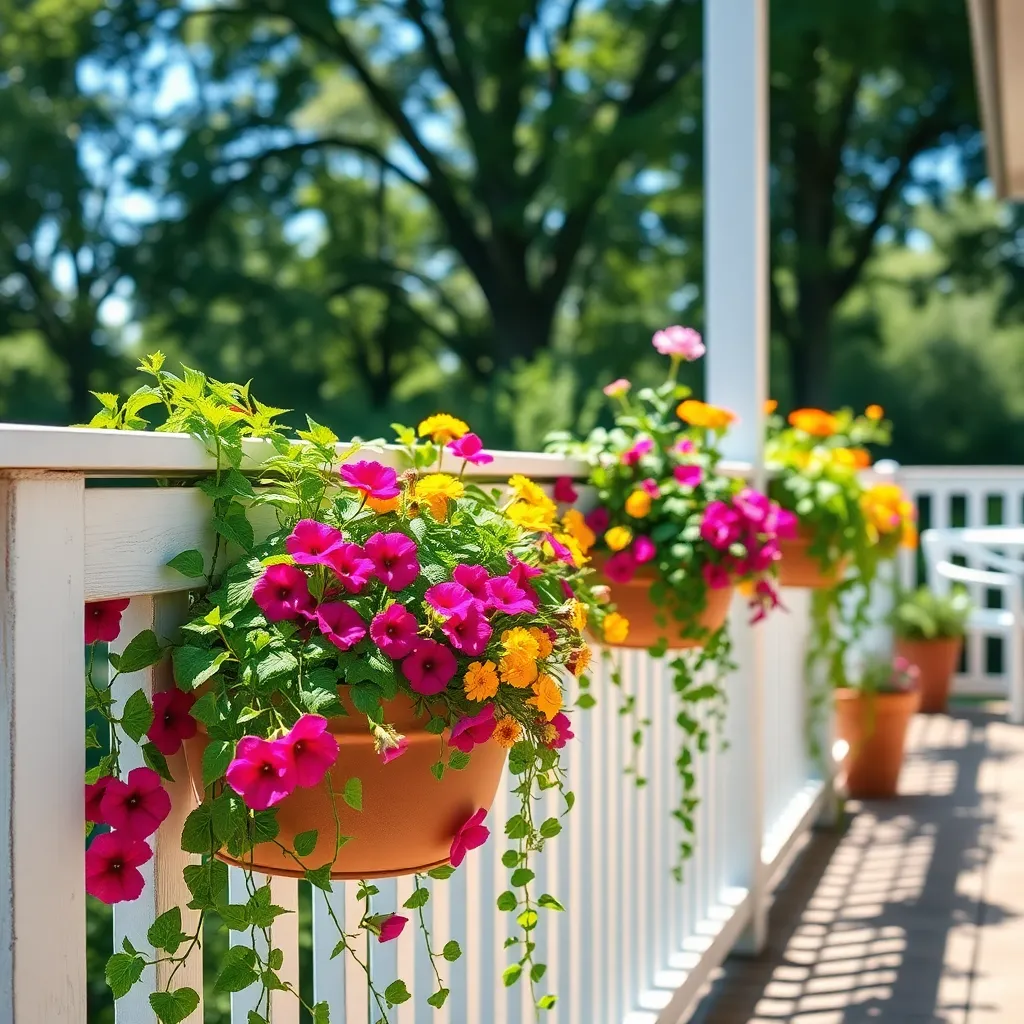
Attaching planters to your railing is an excellent way to maximize vertical gardening space on your patio. Begin by selecting sturdy railing planters that fit securely over or clamp onto your railing without causing damage.
It’s crucial to choose planters with adequate drainage to prevent waterlogging, which can harm plants. Look for planters with drainage holes and consider lining the bottom with a layer of small stones or gravel to further aid drainage.
When selecting plants, opt for those that thrive in contained environments, such as herbs, small flowers, or trailing plants. Consider the sun exposure your railing receives; for sunny spots, choose sun-loving plants like basil or petunias, while shady areas suit ferns or impatiens.
Watering needs are essential to consider, especially since planters can dry out faster due to their exposed position. Establish a routine of watering more frequently during hot weather, ensuring the soil remains consistently moist but not soggy.
For an advanced touch, incorporate a self-watering system or use moisture-retentive soil mixes to reduce maintenance. These systems can help keep your plants healthy even if you’re away for a few days, making them a great investment for busy gardeners.
Hang Plants from Ceiling Hooks
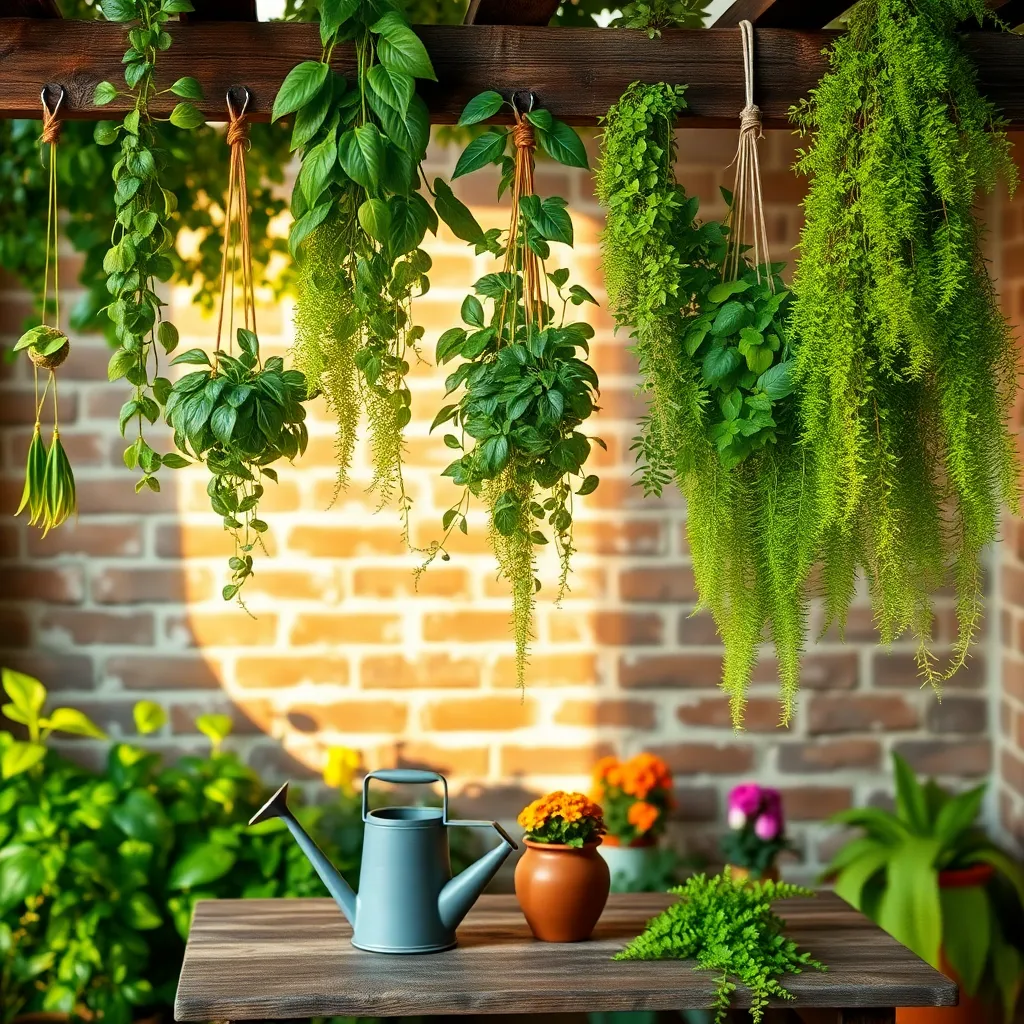
Hanging plants from ceiling hooks is an excellent way to make the most of your vertical space on the patio. This approach not only maximizes space but also adds a lush, green dimension to your outdoor area.
To start, you’ll need sturdy ceiling hooks capable of holding the weight of your chosen plants. Ensure the hooks are screwed into a solid beam or joist to prevent any accidents.
Choose plants that thrive in hanging environments, such as ferns, spider plants, or trailing ivy. These plants generally prefer well-draining soil, so consider a mix with perlite or sand to ensure adequate aeration.
Watering hanging plants might require a bit more attention, as they can dry out faster than ground-level plants. Check moisture levels frequently and water when the top inch of soil feels dry.
For advanced gardeners, consider using a pulley system to easily adjust the height of your hanging plants. This can help with maintenance tasks like watering and pruning, and allows you to change the plants’ exposure to sunlight as needed.
Design with Vertical Succulent Frames
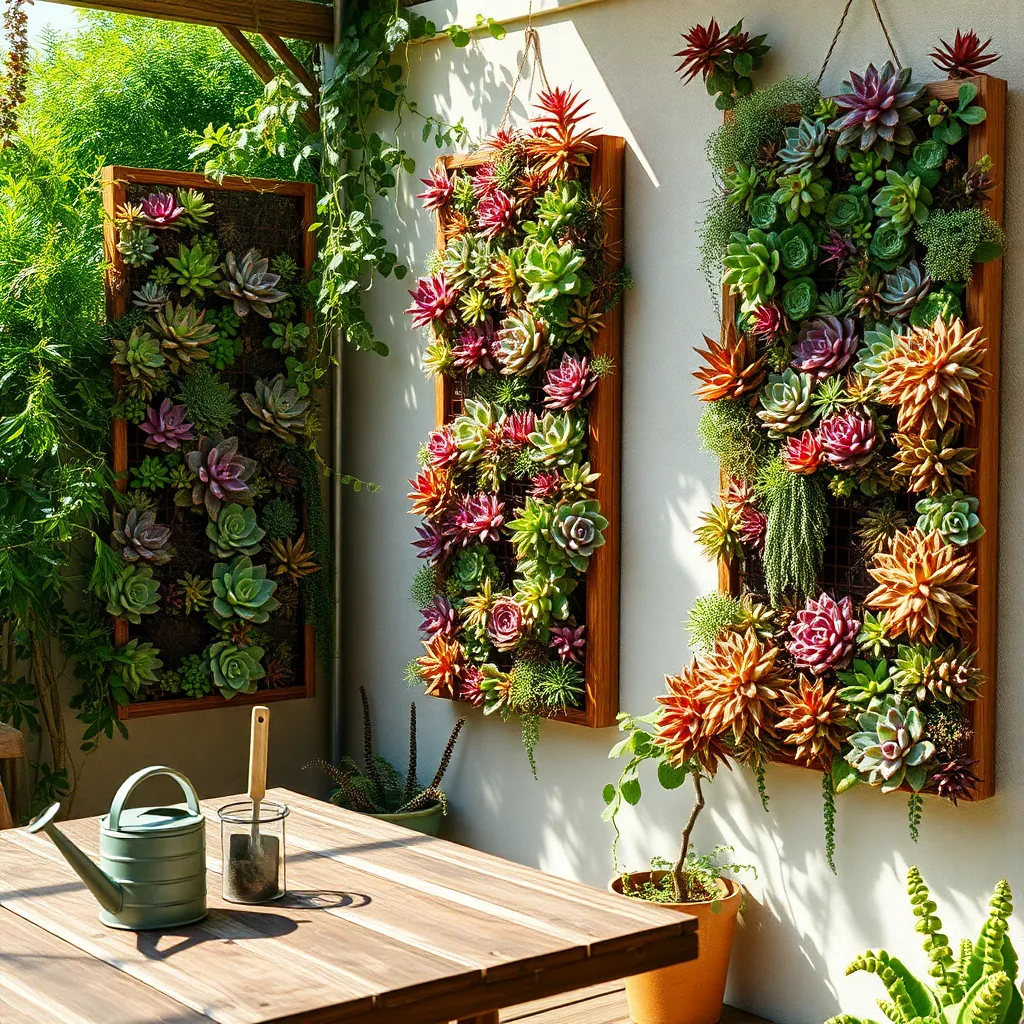
Transform your patio into a lush oasis by incorporating vertical succulent frames that add texture and depth to your outdoor space. These frames are not only visually striking, but they also make efficient use of vertical space, perfect for small patios.
To get started, choose a sturdy frame made from wood or metal that can withstand outdoor conditions. Fill the frame with a well-draining soil mix, such as a blend of cactus potting soil and perlite, to support healthy succulent growth.
Position your frame in a spot that receives at least six hours of bright, indirect sunlight each day, crucial for succulents to thrive. Ensure the frame is securely mounted to prevent it from tipping over, especially in windy conditions.
Water your succulents sparingly, allowing the soil to dry out completely between waterings to prevent root rot. During the growing season, typically spring and summer, you can fertilize with a diluted, balanced liquid fertilizer every month for optimal growth.
- Opt for a variety of succulents with different textures and colors to create visual interest.
- Consider using trailing varieties like string of pearls or burro’s tail for a cascading effect.
- Regularly rotate your frame to ensure even sunlight exposure for all plants.
Conclusion: Growing Success with These Plants
In exploring these 13 vertical patio garden ideas, we’ve delved into the heart of relationship building through shared activities and nurturing growth together. From creating living walls that symbolize connection, to crafting hanging gardens that inspire shared dreams, each concept encourages collaboration, patience, and a touch of creativity—essential elements in any thriving relationship. These ideas reflect the importance of nurturing your bond, just as you would tend to a garden, and highlight how working together can yield beautiful results.
As an immediate next step, choose one garden idea that resonates with you and your partner and begin planning your project today. This shared goal will not only beautify your space but strengthen your connection as you cultivate something meaningful together.
Remember, sustaining a healthy relationship requires ongoing effort and inspiration. Save this article to your bookmarks as a handy reference, ensuring you have these ideas at your fingertips whenever you seek to revitalize your bond.
Looking ahead, embrace the journey of continuous growth and learning in your relationship. With a dash of creativity and cooperation, your partnership can flourish, creating a harmonious and vibrant life together.


